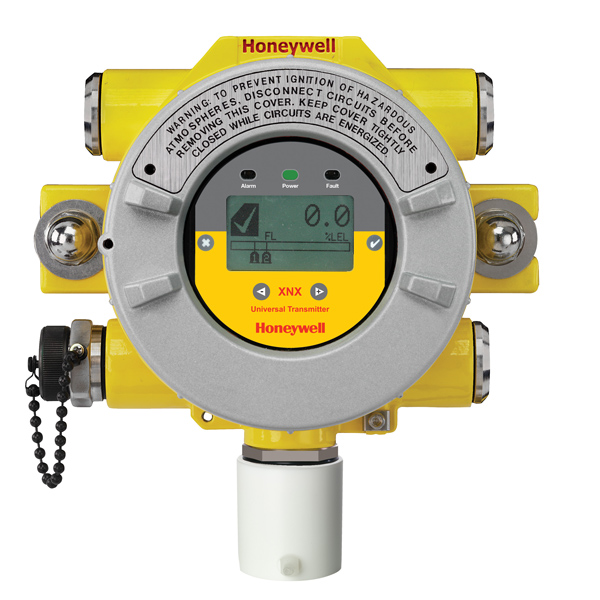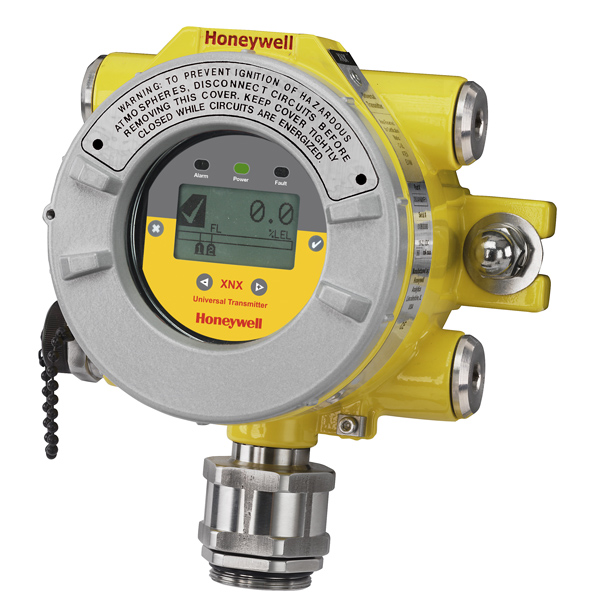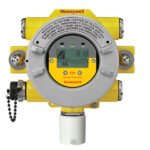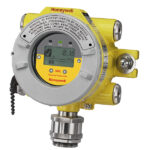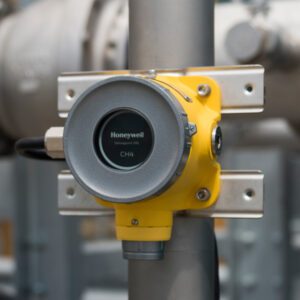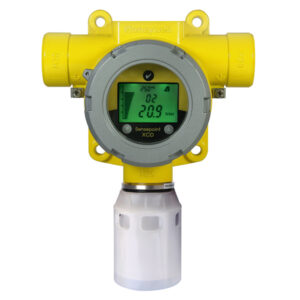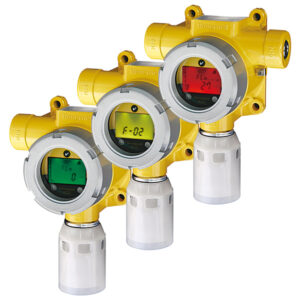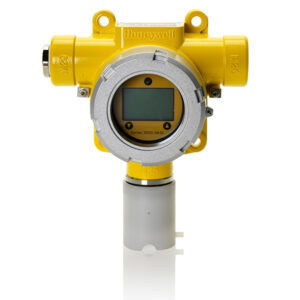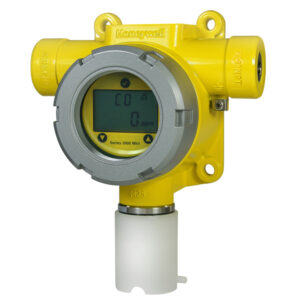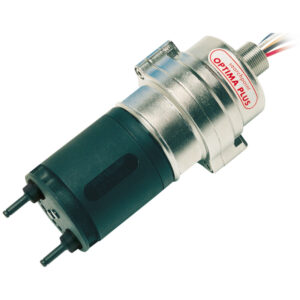Gas
Choose an option Cl2 CO CO2 ETO H2 H2S HCl HCN HF LEL NH3 NO NO2 O2 O3 PH3 SO2 Gas Chlorine
Chlorine is a reactive halogen element with primarily toxic and irritating properties. Unfortunately, due to that its first mass application was in the form of war poison. The paradox is that chlorine ions are necessary to sustain any form of life on Earth. It is used in many industrial processes, especially in the chemical and pharmaceutical industries and in petrochemistry. It is a widespread disinfectant, and its most known application is in the disinfection of drinking water, swimming pools and public bathrooms, where the main dangers are hidden. In concentrations above 3 ppm people smell it due to its very characteristic smell. It is dangerous already in concentrations above 5 ppm. At concentrations of 30 ppm it causes coughing and vomiting, and above 50 ppm there is permanent damage to the respiratory organs. It is lethal in concentrations above 1,000 ppm.
The standard alarm limits for the EU are 0.5 ppm / 1 ppm, with a 15 minute STEL limit of 1 ppm.
Carbon Monoxide
The silent killer, one of the most dangerous and insidious gases, the product of incomplete combustion of fossil fuels. The gas is tasteless and odorless, transparent, unrecognizable, and accumulates in the blood (hemoglobin) with an affinity 240 times higher than oxygen! Concentrations of 300 parts per million in the air (ppm) are already deadly to an adult.
Even the lowest concentrations accumulate in the blood, so the Short Time Exposure Limit (STEL) or maximum allowed accumulated exposure concentration is only 20 ppm, and the daily 8-hour maximum allowed average accumulated exposure (TWA - Time Weighted Average) is 100 ppm. There is a great danger in homes that use fossil fuels, and it is part of the process in ironworks, power plants, petrochemicals, etc.
The standard settings for the lower and upper alarm thresholds are 20 ppm and 100 ppm, and gas also accumulates in the body, so the standard STEL Limit is also 100 ppm, with a TWA limit of 20 ppm.
Carbon Dioxide
Carbon dioxide is a colorless, tasteless and odorless gas, heavier than air, whose current concentration in the Earth's atmosphere is approx. 450 ppm. It is a product of the breathing of living creatures and combustion of fossil fuels. It is absorbed by green plants and used in the process of photosynthesis. The main greenhouse gas is responsible for heating the atmosphere. The gas itself is not toxic or flammable, but its high concentrations can push out oxygen from the room and cause suffocation. Its higher concentration in room is a sure indicator of the presence of living creatures, so this fact is used when detecting the illegal transport of people or animals. It is an essential element for measuring the overall air quality. Its industrial application is very wide - it is used in the food and pharmaceutical industry, natural gas production, winemaking, fire alarm, refrigeration, agriculture, medicine, as an inert gas in compressors and welding processes and as a general pressurizer. Concentrations of 7% -10% (70,000 - 100,000 ppm) in the air can cause suffocation. Acceptable concentrations in closed working spaces are up to approx. 2,500 ppm, above this limit there may be a general deterioration in work efficiency (drowsiness, fatigue, mental slowness).
Typical detector alarm settings within the EU range Low = 5,000 ppm, High = 30,000 ppm, TWA = 5,000 ppm, STEL = 30,000 ppm. CO2 detectors, due to their wide application in practically every segment of life, are becoming more and more noteworthy.
Ethylene Oxide
Ethylene oxide is an organic compound of high reactivity. It is a very dangerous, poisonous, carcinogenic, mutagenic, colorless and flammable gas with a slightly sweet smell. On the other hand, due to its chemical characteristics as a raw material it has a huge and irreplaceable application to the vast majority of process industries. It is used in the production of detergents, solvents, plastics and various organic chemicals discount ethylene glycol, polyethylene glycol ethanolamine and complex glycols. It is used both as a disinfectant and in the sterilization process, especially in hospitals, medical institutions and pharmacies.
ETO has one of the widest ranges of flammability concentration in the air in general. The lower explosive limit (LEL) is 2.6% by volume (v / v) and the upper (UEL) is 100% v / v.
The standard settings of protection devices within the EU for ETO range from Low = 3 ppm / High = 7 ppm
Hydrogen
The first, easiest and ubiquitous element in the universe. Due to its low density, it "escapes" into space, so there is not much of it on Earth in its pure form. It is part of industrial processes, especially in the petrochemical, petroleum and food industries. It is part of the green energy of the future. Hydrogen is not toxic to the human body, but it is extremely flammable and explosive, so the main risks and dangers lie in that fact. Its flammability / explosive range ranges from 4.00% (LEL) to 77.00% (UEL) by volume (v / v) in air.
The standard limits of alarm settings in ppm are Low = 100 ppm, High = 400 ppm.
Hydrogen Sulfide
Hydrogen sulfide is a poisonous, colorless and corrosive gas that occurs as a by-product of the decomposition of organic matter without the presence of oxygen (wetlands, sewage) by anaerobic microorganisms. It also occurs in volcanic gases, geothermal springs and along deposits of natural gas (up to 30%) and crude oil. It also occurs in the human body as a product of metabolism, and even in the breath in some disorders. The largest industrial emitters of hydrogen sulfide are oil refineries (oil hydrodesulfurization process - HDS, Claus process), gas plants, petrochemicals, pharmaceutical industry, coke ovens, paper mills and sewage and drainage systems. The positive side of this very poisonous gas is that in very small concentrations (50 ppb) it can be felt as an unpleasant smell of rotten eggs so this is the first warning. However, with a rapid increase in concentration (which is most often the case), the mucous membrane and the sense of smell are paralyzed and the unpleasant odor completely disappears while the toxicity increases. At concentrations higher than 50 ppm, visual impairment occurs.
The standard settings for the lower and upper alarm thresholds are 5 ppm and 10 ppm, and gas also accumulates in the body, so the standard STEL Limit is 10 ppm, and the TWA limit is 5 ppm.
Hydrogen Chloride
Hydrogen chloride is a colorless reactive and toxic gas at room temperature that reacts with water vapor to form hydrochloric acid, an aqueous solution of the same chemical formula. Hydrogen chloride is mostly used for the production of hydrochloric acid, which is used in the chemical and pharmaceutical industries. It is an important substance in the production of vinyl and alkyl chlorides. Inhalation of hydrogen chloride causes irritation, suffocation and inflammation of the respiratory tract, pulmonary edema and death in higher concentrations.
Standard settings of protection devices within the EU for HCl range from Low = 5 ppm / High = 10 ppm, TWA = 5 ppm, STEL = 10 ppm
Hydrogen Cyanide
Hydrogen cyanide is an extremely toxic and flammable liquid / gas with a boiling point slightly above room temperature (25.6 ° C). It is one of the most toxic substances generally used in industry. Just 36 molecules of HCN in a million molecules that are mixed in air (36 ppm) can kill a healthy adult within 2 hours. On the other hand, it is a very valuable substance in the chemical and pharmaceutical industries, especially in the initial reactions to obtain useful organic compounds in the organic chemistry and pharmaceutical industries.
According to EU standards and recommendations, alarm limits of protective devices are set Low = 0.9 ppm, High = 4.5 ppm, TWA (8 h) = 0.9 ppm, STEL (15 min) = 4.5 ppm.
Hydrogen Fluoride
Hydrogen fluoride is an extremely toxic and dangerous compound of fluor and hydrogen with a boiling point of 19.5 ° C, so in nature it occurs as a gas and as a liquid. In contact with water (water vapor), strong and corrosive hydrofluoric acid is formed, which can cause rapid blindness by destroying the cornea and severe skin damage. It is mostly used in the petrochemical industry, organic chemistry (for organofluoride compounds), as a catalyst and solvent.
Standard settings of protection devices within the EU for HF range from Low = 1.5 ppm / High = 3 ppm, TWA = 1.8 ppm, STEL = 3 ppm
Flammable group of gases (Hydrocarbons)
They occur in practically every segment of life. The most famous representative is natural gas (methane, CH4), and the combinations of carbon and hydrogen molecules are practically unlimited. We use them as energy sources in all endothermic processes and in almost all industries (chemical, petroleum, pharmaceutical, petrochemical). The biggest problem is their flammability and explosiveness, and for the most part, toxicity. They are one of the biggest risks in all industries. Flammability directly depends on their concentration in the air mixture and ranges between LEL - Lower Explosive Limit and UEL - Upper Explosive Limit. At concentrations of 4.4% to 17% by volume of methane in the air, the spark causes an explosion, so 4.4% v / v CH4 = 100% LEL.
The standard limits of alarm settings within the EU are Low = 10% LEL, High = 20% LEL
Ammonia
Ammonia is a colorless, toxic, irritating and flammable gas with a characteristic odor that is used in many industrial processes, and is a product of the metabolism of living creatures. Among its dangerous characteristics, the most pronounced is toxicity. It is flammable, with slightly higher ignition and self-ignition temperatures (132 ° C / 651 ° C). It irritates respiratory system and mucous membranes of living organisms. It is present in chemical and petrochemical processes (fertilizer production), agriculture, pharmaceuticals, gas production, fermentation, wastewater treatment, refrigeration industry, and is also used as an antimicrobial or cleaning agent. Concentrations above 5,000 ppm are toxic to humans and mammals.
Alarm limits for the EU are 20 ppm / 50 ppm, with TWA and STEL limits of the same values.
Nitrogen Monoxide
Nitric (II) oxide (Nitrogen monoxide) is a colorless toxic, reactive and irritating free radical gas that is not flammable but, like oxygen, promotes the combustion of flammable materials. It is highly toxic by inhalation or absorption through the skin. It has a sharp and sweet odor. It is used as an important compound in the chemical industry and organic chemistry (hydroxylamine). It is also important in the biology of organisms as a messenger molecule in communication between the cardiovascular, nervous and immune system. It is a significant air pollutant from car exhausts and an ozone depletor due to its free radical characteristics. Concentrations of 60 ppm - 150 ppm cause immediate severe irritation of the nose and mucose membrane. Concentrations of 100 ppm - 150 ppm are dangerous for 30 - 60 minutes exposure and concentrations above 200 ppm can be fatal.
Standard settings of protection devices within the EU range from Low = 2 ppm / High = 5 ppm, TWA = 2 ppm. Given the low toxicity of NO over a short period of time, EU bodies do not report specific values for STEL (EU SCOEL Recommendation on Nitrogen Monoxide, 06-2014).
Nitrogen Dioxide
Nitrogen (IV) oxide (Nitrogen dioxide) is a poisonous and reactive gas, also an oxidant that enhances combustion of flammable materials. It is reddish brown at 21.2 ° C, yellowish at lower temperatures. Inhalation of large quantities can be fatal for the human body. It is used intensively in the chemical and process industries, specialized laboratories and in pharmaceuticals, especially in sterilization processes. In the process industry, it is used for the synthesis of nitric acid, an important chemical raw material. It is one of the greenhouse gases produced by internal combustion cars, and low concentrations in polluted air have a negative effect on the airways, especially of more sensitive populations.
Standard settings of protection devices within the EU for NO2 range from Low = 0.5 ppm / High = 1 ppm, TWA = 0.5 ppm, STEL = 1 ppm.
Oxygen
Gas which is essential for life, in a concentration of 20.9% v / v makes our planet unique. It supports burning and is part of almost all natural and human created processes that take place on Earth. Concentrations below 16.0% v / v cause drowsiness and confusion, and below 6% v / v death. It is also dangerous in high concentrations because it increases the flammability of the material. Concentrations above 24.0% v / v may cause spontaneous combustion of clothing.
The standard limits of alarm settings within the EU are Low = 19.5% v / v, High = 23.5% v / v
Ozone
Ozone is a more reactive allotropic modification of oxygen with three atoms in the molecule. The poisonous gas is a light blue hue and a strong, sharp odor reminiscent of chlorine. It is formed by the action of UV rays and electrical discharges on oxygen, and its most important role is to protect terrestrial life through the mantle in the atmosphere. It is an extremely strong oxidant, much stronger than standard oxygen. In the lower layers of the atmosphere it occurs as a pollutant and a harmful gas that acts on the respiratory tract. In industry, it is most often used for disinfection of larger rooms and plants (hospitals, food industry), sterilization (pharmaceuticals), water disinfection, space deodorization, pool sanitation, bleaching, disinfection of agricultural products and numerous other similar applications.
Ozone concentrations above 50 ppm can be lethal to an adult.
The standard settings of protection devices within the EU for O3 range from Low = 0.1 ppm / High = 0.3 ppm.
Phosphine
Phosphine is an extremely poisonous colorless and flammable gas with an unpleasant odor reminiscent of rotten fish. It is heavier than air. It is completely odorless in its pure form. It is a highly toxic respiratory poison even in very low concentrations. The most important use of phosphine is in the process of fumigation, where it is a very efficient, cheap and fast-acting fumigant that does not leave traces on the treated product. It is widely used in all areas where parasites occur, especially in agriculture (silos, warehouses) and the food industry. It is also applied to organic chemistry and the microprocessor industry.
Standard settings of protection devices within the EU for O3 range from Low = 0.1 ppm / High = 0.2 ppm, TWA = 0.1 ppm, STEL = 0.2 ppm
Sulfur Dioxide
A toxic gas whose smell may resemble a burning match. It is found on Earth in very small concentrations, it is most often present during volcanic eruptions. It is greenhouse gas and also one of the biggest polluters of the atmosphere. It is used in chemical and petrochemical processes (for the production of sulfuric acid), and because of its antimicrobial properties in food production and winemaking as a preservative (E220).
The alarm limits for the EU are 0.5 ppm / 1 ppm, with TWA and STEL 0.5 ppm / 1 ppm.
Clear
